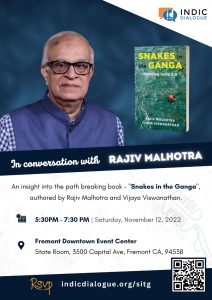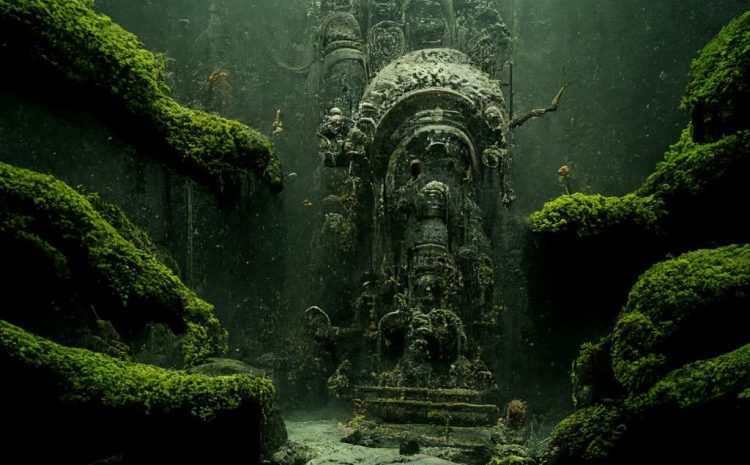
Sanatan Dharma - An Eternal Elixir
Sanatan Dharma, loosely translated as the eternal or ancient path of righteousness, stands as a guiding light of timeless wisdom, offering profound insights into the essence of existence, consciousness, and the interconnectedness of all beings. It serves as a remedy for the myriad challenges faced by the modern world, brought upon by humanity’s own actions and uncertainties.
Often identified as Hinduism, Sanatan Dharma transcends the confines of mere religion; it embodies a way of life applicable to all beings, irrespective of social status, creed, race, religion, nationality, and gender, as a whole, deeply ingrained in the age-old wisdom of the Indian subcontinent. Unlike doctrines authored by a single individual or a select few, it has evolved organically through collaborative efforts across generations, undergoing thorough scrutiny over millennia.
Sanatan Dharma is distinguished by its comprehensive and holistic approach, fostering constructive community coexistence while envisioning the peaceful co-existence of the global community across the ages. It acknowledges the inherent complexities of human nature and addresses the diverse needs and aspirations of individuals, offering a sublime vision for all to strive towards and outlining a clear path for spiritual elevation.
The Dharma
In the context of Sanatan Dharma, the term “Dharma” transcends mere concepts like “Righteousness,” “Duty,” or “Order.” It encompasses a profound understanding that goes beyond the scope of a modern legal-justice system. Rather, Dharma intricately attends to the unique needs and desires of every being, with the overarching goal of preserving, protecting, amplifying, and enhancing the greater good of the community at all times.
This ancient concept of Dharma takes into consideration the specific type, predicament, circumstances, and place of each being, as well as the prevailing spirit of the time. It meticulously examines all relevant evidence, if available, to ensure a comprehensive and equitable approach to decision-making. Thus, Dharma in Sanatan Dharma is not merely a set of rigid rules or moral codes, but a dynamic and compassionate guiding principle that adapts to the nuances of human existence while upholding the welfare of society as a whole.
The Way of Life
Sanatan Dharma transcends mere principles, doctrines, rituals, and philosophies; it is not confined to a set of guidelines but rather embodies a comprehensive way of life. This ancient tradition encompasses all forms of science, arts, traditions, and culture, serving as a rich repository of knowledge and wisdom that extends far beyond spiritual teachings.
In addition to its profound spiritual insights, Sanatan Dharma encompasses a vast array of disciplines, including STEM fields such as mathematics, astrology, astronomy, medicine, surgery, life sciences, and research. Through centuries of inquiry and exploration, practitioners of Sanatan Dharma have contributed invaluable inventions and discoveries in these fields, reflecting a holistic approach to understanding the world and its mysteries.
Sanatan Dharma recognizes the interconnectedness of all knowledge and disciplines, acknowledging that spiritual wisdom is intertwined with scientific inquiry and artistic expression. Thus, it fosters a culture of curiosity, exploration, and innovation across various domains of human endeavor.
From the intricate mathematical formulas found in ancient texts to the precise observations of celestial phenomena in astrology and astronomy, Sanatan Dharma embraces a scientific approach to understanding the universe. Similarly, its emphasis on holistic health and well-being has led to advancements in medicine and life sciences, incorporating principles of mind-body balance and natural healing.
Moreover, Sanatan Dharma celebrates artistic expression as a means of connecting with the divine and expressing profound truths. Through music, dance, visual arts, and literature, practitioners of Sanatan Dharma explore themes of spirituality, morality, and the human experience, enriching cultural traditions and fostering creativity and expression.
In essence, Sanatan Dharma encompasses a holistic and integrated approach to life, encompassing spiritual, scientific, artistic, and cultural dimensions. It serves as a timeless source of wisdom and inspiration, guiding individuals on a journey of self-discovery, personal growth, and the pursuit of truth across all aspects of human endeavor.
Furthermore, it offers a multitude of livelihood options, each leading towards the same ultimate life goal, accommodating the varying inclinations and circumstances of individuals factoring in their vocation, capacity, capability and resourcefulness.
Core Principles of Sanatan Dharma
Sanatan Dharma, the eternal way of life, is rooted in a set of core principles that serve as the bedrock of its teachings:
- Sathya (Truth): Upholding truth, honesty, and integrity is paramount in Sanatan Dharma. It advocates speaking the truth in a pleasant manner while refraining from falsehood
- Dharma (Duty and Righteousness): Dharma encompasses moral, ethical, and societal responsibilities, emphasizing living in harmony with one’s true nature, society, and the cosmic order
- Shanthi (Peace): Inner peace of the body, mind, and soul is revered in Sanatan Dharma, promoting tranquility and serenity in all aspects of life
- Prema (Love): Sanatan Dharma extols the virtue of selfless love, encouraging individuals to love and serve all beings with compassion and care
- Ahimsa (Non-Violence): Ahimsa lies at the heart of Sanatan Dharma, advocating compassion, empathy, and the avoidance of harm to all living beings
- Karma (Law of Cause and Effect): The concept of Karma underscores personal responsibility and the idea that individuals shape their destinies through their thoughts, words, and deeds, with every action having consequences
- Samsara and Moksha (Cycle of Birth and Liberation): Sanatan Dharma acknowledges the cycle of birth, death, and rebirth known as Samsara, while also holding that liberation from this cycle, known as Moksha, is attainable through spiritual realization and self-transcendence
- Unity of Existence: Recognizing the interconnectedness of all beings, Sanatan Dharma emphasizes compassion, empathy, and mutual respect in human relationships, affirming the underlying unity of existence
Practices and Rituals
Sanatan Dharma encompasses a diverse array of rituals, ceremonies, and spiritual practices aimed at fostering personal growth and cultivating a deeper connection with the divine. Sanatan Dharma provides multiple paths to spiritual realization, catering to the diverse inclinations and aspirations of individuals, while emphasizing the importance of selfless service, devotion, and knowledge in the journey towards liberation from the cycle of birth and death.
- Yoga: Derived from the Sanskrit word meaning “union,” Yoga is a holistic system of physical, mental, and spiritual practices aimed at achieving harmony and balance. It includes various techniques such as asanas (physical postures), pranayama (breath control), and meditation
- Gnana (Knowledge) Yoga: Involves the pursuit of knowledge through the reading of scriptures to attain enlightenment
- Bhakti (Devotion) Yoga: Involves worship, prayers, and devotional practices aimed at expressing reverence and gratitude to deities and divine beings through various rituals and acts of devotion
- Karma (Action) Yoga: Involves selfless service (Seva), acts of charity, compassion, and community service aimed at alleviating the suffering of others and fostering a spirit of unity and interconnectedness
Embracing Diversity
One of the most remarkable aspects of Sanatan Dharma is its inclusivity, acceptance and celebration of plurality and diversity, not just across humanity, but across all beings. It recognizes that there are countless paths to truth and encourages each being to follow the path that resonates most deeply with their own unique dharma, nature, and inclinations. Whether through devotion, knowledge, meditation, or selfless service, Sanatan Dharma invites seekers from all walks of life to embark on the journey of self-discovery and spiritual realization.
Today’s Relevance
In an era marked by rapid globalization, technological advancements, and cultural transformations, the ancient wisdom of Sanatan Dharma continues to hold profound relevance and significance. While some may view it as a relic of the past, the timeless principles and teachings of Sanatan Dharma offer invaluable insights and guidance for navigating the complexities of modern life with wisdom, resilience, and compassion, leading towards a more harmonious and sustainable future. The relevance is more pronounced than ever before, transcending geographical boundaries to offer timeless wisdom and guidance to seekers worldwide. Its universal principles, ecological wisdom, holistic wellness practices, social ethics, spiritual teachings, and cultural heritage offer valuable insights and guidance for addressing the myriad challenges facing humanity in the 21st century. Here are several reasons why Sanatan Dharma remains relevant in today’s world:
1. Universal Principles
At its core, Sanatan Dharma is grounded in universal principles that transcend cultural boundaries and historical contexts. In a world grappling with ethical dilemmas, environmental crises, and social injustices, the ethical and moral framework provided by Sanatan Dharma offers valuable guidance for leading a balanced and purposeful life.
2. Harmony with Nature
Sanatan Dharma recognizes the interconnectedness of all life forms and emphasizes the sacredness of nature. Its teachings advocate for living in harmony with the natural world, promoting sustainability, and ecological balance. At a time when environmental degradation and climate change pose existential threats, the ecological wisdom embedded in Sanatan Dharma offers a holistic approach to addressing these pressing issues.
3. Personal Growth and Well-being
Sanatan Dharma offers a holistic approach to personal growth and well-being, encompassing physical, mental, emotional, and spiritual dimensions. Practices such as yoga, meditation, and Ayurveda provide effective tools for managing stress, enhancing resilience, and promoting overall health and vitality. In an age marked by high levels of stress, anxiety, and lifestyle-related diseases, the holistic wellness practices of Sanatan Dharma offer valuable solutions for achieving balance and inner peace.
4. Social Harmony and Unity
Sanatan Dharma emphasizes the inherent unity and interconnectedness of all beings, transcending artificial boundaries of social status, creed, race, or nationality. Its teachings promote social harmony, tolerance, and compassion, fostering a sense of unity in diversity. In a world marred by conflict, prejudice, and social division, the message of unity and inclusivity espoused by Sanatan Dharma is more relevant than ever, offering a pathway to building a more peaceful and harmonious society.
5. Spiritual Fulfillment and Transcendence
Sanatan Dharma provides a comprehensive framework for spiritual growth and self-realization, offering seekers a pathway to transcendence beyond the confines of material existence. Its teachings on meditation, self-inquiry, and devotion facilitate the awakening of higher states of consciousness and the realization of one’s true nature. In an age marked by materialism, consumerism, and existential angst, the spiritual wisdom of Sanatan Dharma offers a profound antidote, guiding individuals towards deeper meaning, purpose, and fulfillment in life.
6. Cultural Preservation and Revival
Sanatan Dharma serves as a repository of ancient knowledge, traditions, and cultural heritage that have been preserved and transmitted through generations. In an era of rapid cultural homogenization and globalization, the preservation and revival of Sanatan Dharma’s cultural traditions, rituals, and arts are essential for safeguarding the diversity and richness of human civilization.
Sanatan — a few words of Caution:
Modern Perceptions :
Sanatan Dharma cannot be accurately judged or understood solely through the lens of the past 500 years, particularly in the wake of colonial aggression by the Mughals and the British. During this period of external influence and domination, many of its principles have been misinterpreted, diluted, and even distorted to accommodate the agendas of aggressors.
The rich tapestry of Sanatan Dharma, with its profound philosophical underpinnings and cultural intricacies, spans millennia of evolution and refinement. Its teachings have been passed down through oral tradition, ancient texts, and cultural practices that predate colonial incursions.
The colonial period witnessed a deliberate effort to undermine and erode the integrity of Sanatan Dharma, as colonial powers sought to exert control over indigenous cultures and beliefs. The imposition of Western ideologies, the distortion of traditional practices, and the suppression of indigenous knowledge systems all contributed to a skewed understanding of Sanatan Dharma.
Furthermore, colonial biases and prejudices led to misinterpretations and misrepresentations of Sanatan Dharma, often portraying it as primitive, backward, or superstitious. This colonial gaze shaped the scholarly discourse and public perception, perpetuating stereotypes and misconceptions that persist to this day.
To truly understand and appreciate Sanatan Dharma in its authentic form, one must look beyond the distortions imposed by colonialism and engage with its teachings in their original context. This requires a nuanced understanding of its philosophical concepts, cultural practices, and historical development, free from the biases and prejudices of colonial interpretations.
By reclaiming and reaffirming the authenticity of Sanatan Dharma, we honor its rich legacy and ensure that its timeless wisdom continues to inspire and guide humanity in the pursuit of truth, righteousness, and spiritual enlightenment.
Practitioners Beware:
Just as a pearl diver, limited by his own abilities, explores the vast depths of the ocean to mine precious pearls, so too is the Sanatan practitioner constrained by their individual capacities and efforts in comprehending the principles and embodying the tenets of Sanatan Dharma.
The analogy of the pearl diver encapsulates the notion that the exploration of Sanatan Dharma is akin to delving into the boundless depths of wisdom and spirituality. Just as the diver must navigate the vast expanse of the ocean, facing challenges and obstacles along the way, the practitioner of Sanatan Dharma encounters complexities and nuances in their quest for understanding and application.
Like the diver who relies on their skills, determination, and endurance to uncover pearls hidden within the ocean’s depths, the practitioner of Sanatan Dharma relies on their personal abilities, efforts, and inner resources to delve into the profound teachings and practices of this ancient tradition.
However, just as the diver may encounter limitations in their exploration of the ocean, so too may the practitioner encounter limitations in their understanding and embodiment of Sanatan Dharma. Despite their best efforts, they may find themselves grappling with the vastness and depth of its teachings, humbled by the realization of their own limitations.
Yet, just as the diver’s perseverance and dedication may lead to the discovery of precious pearls, so too does the practitioner’s commitment and earnest efforts lead to the discovery of profound truths and spiritual insights within Sanatan Dharma. Through diligent practice, introspection, and self-transformation, the practitioner continues to deepen their understanding and embodiment of the principles of Sanatan Dharma, gradually uncovering the pearls of wisdom hidden within its depths.
Conclusion:
In a world characterized by rapid change and uncertainty, Sanatan Dharma stands as a timeless beacon of wisdom, offering seekers a profound path to self-realization and inner peace. With its emphasis on universal principles such as Sathya, Dharma, Shanthi, Prema, and Ahimsa, it provides a holistic framework for living in harmony with oneself, others, and the cosmos. By embracing the teachings and practices of Sanatan Dharma, individuals can embark on a transformative journey of self-discovery, spiritual growth, and ultimately, liberation from the cycle of birth and death.



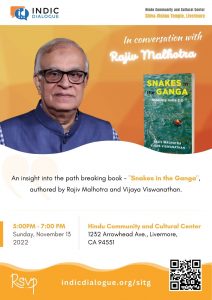
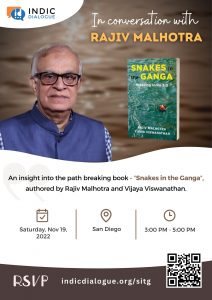
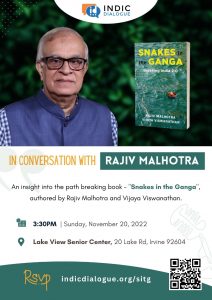 RSVP – IRVINE, CA
RSVP – IRVINE, CA